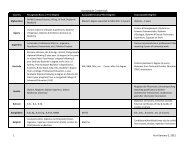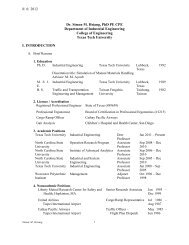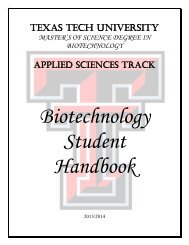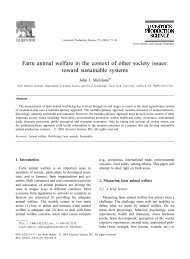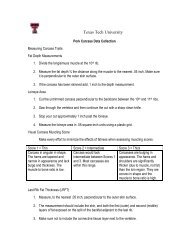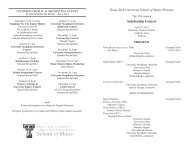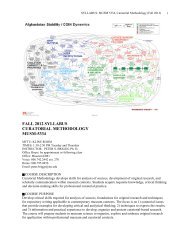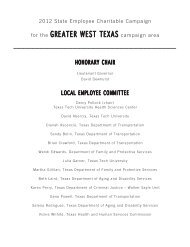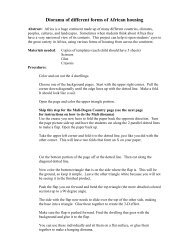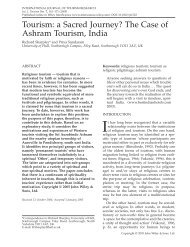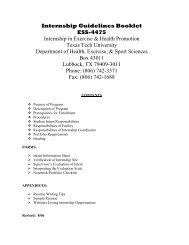Development of Tour Uriely 2005
Development of Tour Uriely 2005
Development of Tour Uriely 2005
Create successful ePaper yourself
Turn your PDF publications into a flip-book with our unique Google optimized e-Paper software.
NATAN URIELY 209<br />
complete portrayal <strong>of</strong> postmodern tourism (Urry 1990; <strong>Uriely</strong> 1997).<br />
Furthermore, unlike former theories <strong>of</strong> modern tourism, both dimensions<br />
generate complementary rather than contradictory perspectives.<br />
For instance, Munt’s position regarding the ‘‘simulational’’ developments<br />
is evident already in the first sentence <strong>of</strong> his work on the<br />
‘‘other’’ postmodern tourism: ‘‘I do not set out to challenge these<br />
but to consider figuratively the other possibilities <strong>of</strong> postmodern tourism’’<br />
(1994:101).<br />
CONCLUSION<br />
The objective <strong>of</strong> this paper was to track and analyze conceptual developments<br />
in the study <strong>of</strong> the tourist experience. In light <strong>of</strong> the ample academic<br />
works regarding this subject and mainly its spread across several<br />
subareas <strong>of</strong> tourism studies, an attempt to provide a complete literature<br />
review was precluded in this paper. Thus, without claiming to capture all<br />
<strong>of</strong> the developments in study <strong>of</strong> the tourist experience, this paper<br />
identified four significant trends in its conceptualization: from differentiation<br />
to re-differentiation <strong>of</strong> everyday life and tourism; from generalizing<br />
to pluralizing portrayals <strong>of</strong> the tourist experience; from focusing<br />
on the toured objects to the attention given to the role <strong>of</strong> subjectivity in<br />
the constitution <strong>of</strong> experiences; and from contradictory and decisive<br />
statements to relative and complementary interpretations.<br />
In light <strong>of</strong> the first three conceptual developments the tourist experience<br />
is currently depicted as an obscure and diverse phenomenon,<br />
which is mostly constituted by the individual consumer. This perspective<br />
regarding the nature <strong>of</strong> contemporary tourist experiences raises<br />
several important issues that need to be dealt with by planners, managers,<br />
and marketers. For example, the availability <strong>of</strong> various aspects<br />
<strong>of</strong> the tourist experience in the routine <strong>of</strong> everyday life seems to<br />
threaten future demands. In addition, the impact <strong>of</strong> practitioners in<br />
the industry needs to be reexamined in light <strong>of</strong> the supposedly<br />
increasing role <strong>of</strong> subjectivity. For instance, the possible constitution<br />
<strong>of</strong> various experiences within the established category <strong>of</strong> individual<br />
mass tourists (Wickens 2002) requires rethinking in terms <strong>of</strong> planning,<br />
managing, and marketing resorts that host this tourist segment.<br />
These, and other practical implications <strong>of</strong> recent conceptualizations,<br />
need to be considered as important issues. Nevertheless, the analysis<br />
carried out in this paper concerns mostly the consequences <strong>of</strong> the<br />
four conceptual developments rather than on the practice <strong>of</strong> tourism<br />
in real life.<br />
By reviewing the four trends as a whole, it is argued that while the<br />
early theories <strong>of</strong> the tourist experience complied with the so-called<br />
‘‘modernist’’ form <strong>of</strong> theorizing in the social sciences, contemporary<br />
conceptualizations <strong>of</strong> the same issue correspond to modes <strong>of</strong> analysis<br />
referred to in the literature as ‘‘postmodernist’’ thought. In this<br />
context, the association between postmodernist theorizing and practices<br />
<strong>of</strong> deconstruction (Denzin 1991; Frazer 1989; Ryan 2002) is illustrated<br />
in the first two developments, which emphasize processes <strong>of</strong>



